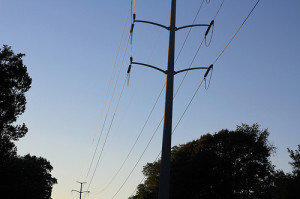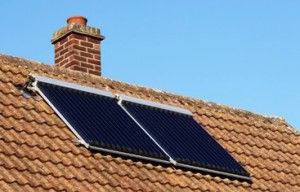 A draft copy of Arlington’s Community Energy Plan sets the ambitious goal of reducing annual greenhouse gas emissions from 13.4 metric tons per county resident today to 3 metric tons per resident by 2050. Getting there, however, will almost entirely rely on factors outside of the county’s regulatory control.
A draft copy of Arlington’s Community Energy Plan sets the ambitious goal of reducing annual greenhouse gas emissions from 13.4 metric tons per county resident today to 3 metric tons per resident by 2050. Getting there, however, will almost entirely rely on factors outside of the county’s regulatory control.
Residents and businesses will not be “required” by the county to do much of anything under the plan, which is now being finalized by the county’s Community Energy and Sustainability Task Force. Most of the savings are expected to come in the form of voluntary gains in building efficiency and from new federal and state mandates.
The plan calls for homes and commercial buildings undergoing “major renovation” past 2015 to be 30 and 50 percent more efficient, respectively, than current structures. By 2050, the efficiency standards will increase to 50 percent for homes and 70 percent for commercial buildings, compared to current averages.
While such requirements could eventually be built into Virginia’s building code, state law prevents Arlington from enacting requirements unilaterally.
 “The recommendations we have here are essentially in recognition that we are in a Dillon Rule state,” said Richard Dooley, the county’s project manager for the Community Energy Plan. Barring action from the state, Dooley says the county will encourage adoption of its recommendations by “mak[ing] sure these things make good economic sense.”
“The recommendations we have here are essentially in recognition that we are in a Dillon Rule state,” said Richard Dooley, the county’s project manager for the Community Energy Plan. Barring action from the state, Dooley says the county will encourage adoption of its recommendations by “mak[ing] sure these things make good economic sense.”
The county will promote the energy cost savings of efficiency gains, Dooley said. Arlington will create a database of federal, state, foundation and local incentives for energy efficiency projects, making it easier for homeowners and business owners to find incentives that apply to them.
Another task force recommendation is to encourage Arlington homeowners to install renewable heating systems, including solar and geothermal water heaters.
“At least 50 percent of domestic hot water needs and 20 percent of space and pool heating needs should be provided by these renewable sources,” the draft report states. So far, the actual means for achieving the goal are not specified.
Among the other task force recommendations:
- The creation of a net-zero energy “scale project” consisting of “a small mixed-use neighborhood at least 100 homes built to energy standards outlined by the Passive House Institute.”
- A reduction of vehicle miles traveled by “developing walkable mixed-use neighborhoods” and encouraging “cylcing, walking, public transit and vehicle pooling.”
- The creation of steam plants in high-density neighborhoods. The plants would provide a central source “heating, cooling, and hot water services” in areas like Crystal City/Pentagon City, Rosslyn/Courthouse, Ballston/Virginia Square and parts of Columbia Pike.
- Increased use of solar panels on public and private buildings.
- Increased use of biofuels.
- “Supporting… federal efforts” to increase vehicle fuel efficiency standards.
- Encouraging building owners to display “Energy Performance Labels” in building lobbies.
- Providing public education and training about energy efficiency.
According to the task force, its recommendations are “designed to ensure that Arlington’s citizens have cleaner, reliable, affordable energy in the years ahead, and that our County remains a competitive place for business and an attractive place to live and work.”
The report’s authors believe that further greenhouse gas reductions are possible if Arlington can convince its neighbors to cooperate. The task force is striving to reach annual emissions of 2.2 metric tons per resident by 2015 “through comprehensive regional coordination and cooperation,” Dooley said.
The task force is expected to send its recommendations to the county board on March 11, with board action possible by May. Following adoption by the board (which looks to be a virtual certainty), the county would then work to come up with a final implementation plan.
Flickr pool photo (top) by Alykat

